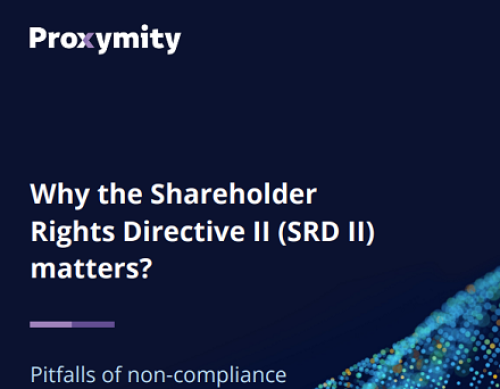In today's interconnected world, finance has a major impact on the real economy and institutional investors exert significant influence over the companies they invest in. Sustainability efforts within companies are centered around reporting and data. While good and transparent sustainability reporting is crucial, there is a paradigm shift underway. As investors are looking to align their financial goals with societal and environmental matters, they will increasingly choose to invest in companies that are considered to be sustainable. If companies learn to navigate this, they can improve their relationship with institutional investors.
The investor perspective
Institutional investors have a vested interest in ensuring that their portfolio companies have strong governance structures, which traditionally encompass corporate strategy, executive compensation and risk management. However, there is a growing awareness that governance extends beyond these traditional aspects. Practices such as sustainability oversight and board diversity are now recognized as vital components of effective governance and becoming more common in what investors expect of investee companies and indeed of themselves.

This shift in perspective has been accompanied by the trend of investors choosing engagement over divestment, utilizing tools like proxy voting, letter writing, one-to-one and collective meetings to influence portfolio companies. As a result, financial institutions will increasingly seek to invest in companies that not only demonstrate a commitment to sustainability but also have robust systems and practices in place to fulfil those commitments.
Shifting regulatory tides
The growing importance of sustainable business strategies and governance on both the investors’ and investees’ sides are strengthened by a regulatory push in several jurisdictions around the globe. While in recent years the corporate sustainability disclosure sphere has been dominated by voluntary memberships and pledges, after much discussion about their effectiveness, the tides are now shifting.
The most significant legislation in the process is the EU’s Corporate Sustainability Due Diligence Directive (CS3D). Expected to apply to more than 17,000 companies, both within and outside the EU, CS3D would necessitate better management of environmental and human rights impacts both in value chains and financing activities. While the CS3D has not yet been finalized and adopted, in its current form it will require institutional investors to conduct environmental and human rights due diligence in their financing activities. This would be a significant push, given that based on research by the World Benchmarking Alliance’s (WBA’s) Financial System Benchmark, less than 3 percent of the 400 financial institutions assessed disclose processes to identify their human rights impact in their financing activities.
The power of engagement
In this new sustainability landscape, high quality and frequent engagement with investors, that moves beyond just inviting annual input from shareholders through proxy voting, will be essential for corporates. But what does a good engagement process look like? Good engagement on sustainability topics is guided by an engagement policy from both parties, discusses sustainability topics and includes clear frameworks with success criteria. Companies might find it useful to look at frameworks and guidance such as the UK Stewardship Code, the Principles for Responsible Investment’s Investment and Stewardship Policy or the Global Investors for Sustainable Development Alliance’s Sector-Specific SDG-related Metrics for Corporate Reporting. These can provide guidance for companies about what to expect when engaging with investors. WBA data shows that on average 31 percent of financial institutions engage with clients or investees on social and environmental topics.

Engagement does not necessarily mean resource-intensive one-on-one conversations. Initiatives like Climate Action 100+ exemplify investor-led efforts that engage high-emitting sectors to drive change on climate issues. The WBA research shows that 43 percent of financial institutions engage with clients or investees collectively on net-zero alignment. But climate is not the only topic in the focus of collective engagement initiatives. The Investor Alliance for Human Rights supports investors on how to engage with portfolio companies on their human rights practices. The Principles for Responsible Investments has also launched its Advance initiative to enable institutional investors to collaborate on human rights and social issues using an engagement approach. WBA’s Digital Benchmark has its own Collective Impact Coalition for advancing ethical AI.
Actions for corporations
In terms of specific actions, firstly, corporations need to enhance the quality of their engagement with investors, while using well-defined policies and frameworks to help guide the process. Embracing this proactive approach allows for practical suggestions and measurable successes to be made. It is essential to recognize that investors who actively engage with your corporation are more likely to become long-term supportive partners rather than short-term profiteers.

Secondly, corporations should align their businesses with the expectations of institutional shareholders, keeping up with the direction the landscape is shifting towards. This means evaluating governance structures, elevating sustainability decision-making to the board level and providing necessary upskilling to board members. Connecting sustainability-related performance indicators to remuneration should also be considered. The tone set by top-level management holds significance, both internally and externally.
Ultimately, it is crucial to acknowledge that integrating sustainability into business practices, extending simply beyond reporting requirements, is the global trend. Corporations that embrace sustainability and proactively build it into their operations gain a competitive advantage in attracting long-term investors.
Andrea Webster is a financial system transformation lead and Flora Rencz is a research analyst at the non-profit World Benchmarking Alliance











